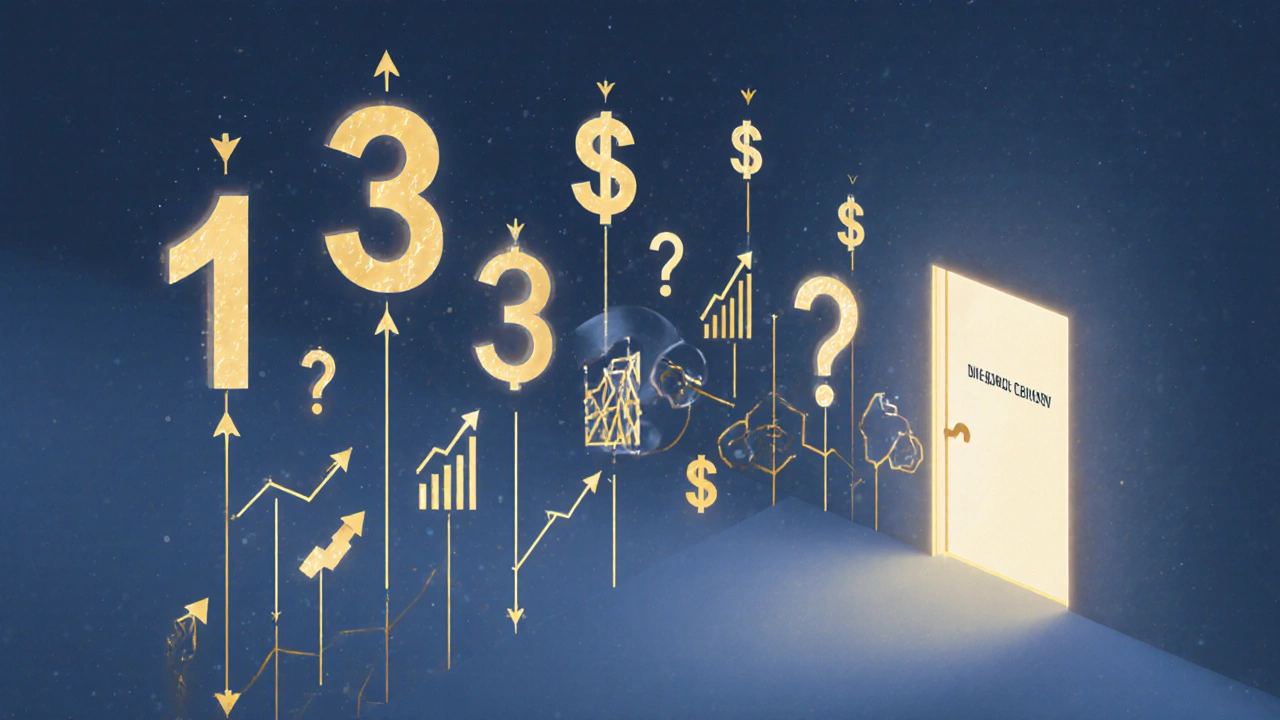MBA Math Readiness Calculator
Calculate Your ROI
Most MBA math is practical business calculation. This tool demonstrates how you'll use numbers to make decisions. Enter your investment and expected return to see the basic math you'll work with in business school.
Enter values to see your ROI calculation
People often assume an MBA is full of complex math-equations, calculus, statistical models stacked like dominoes. But here’s the truth: you don’t need to be a math genius to survive, let alone succeed, in an MBA program. The math isn’t about solving integrals or proving theorems. It’s about using numbers to make smarter decisions. If you can handle basic arithmetic, percentages, and spreadsheets, you’re already ahead of most starters.
What math do you actually use in an MBA?
Most MBA math is practical, not theoretical. You’ll work with financial statements, calculate ROI, forecast sales, and analyze break-even points. These aren’t abstract puzzles-they’re tools you’ll use on day one of your job. In Finance, you’ll learn net present value (NPV) and internal rate of return (IRR). In Marketing, you’ll track customer acquisition cost and lifetime value. In Operations, you’ll optimize inventory levels using simple formulas.
Take a typical case study: a company wants to launch a new product. Your job isn’t to derive a regression model from scratch. It’s to look at historical sales data, estimate demand, factor in marketing spend, and decide if the project makes financial sense. You’ll use Excel, not a calculator. Most schools even provide templates and software so you can focus on interpretation, not computation.
Quantitative courses: What to expect
Almost all MBA programs include at least one core course in statistics or quantitative analysis. This isn’t a graduate-level stats class like you’d find in a PhD program. It’s designed for business students. You’ll learn how to interpret p-values, confidence intervals, and correlation-not how to prove the Central Limit Theorem.
At Harvard Business School, the required Statistics for Managers course covers hypothesis testing and regression using real-world data sets from companies like Amazon and Coca-Cola. At INSEAD, students analyze pricing strategies using simple linear models. At Wharton, the core finance module teaches time value of money with real bond and stock examples. None require advanced calculus.
Many programs offer a pre-MBA math bootcamp for students who feel rusty. These usually last a week and cover basic algebra, percentages, and Excel functions. They’re optional, but 60% of incoming students take them-not because they’re bad at math, but because they want to start strong.
Who struggles with MBA math-and why
The biggest hurdle isn’t math itself. It’s fear. Many students come from humanities or arts backgrounds and assume they’re "not the math type." That mindset is the real obstacle. Once you see how the numbers connect to real business problems, it clicks.
One student from a literature background at Kellogg told me she panicked before her finance class. She’d barely touched math since high school. But after seeing how NPV helped a startup decide whether to expand, she realized: "It’s not about the formula. It’s about the story behind it." She ended up acing the course and landed a role in venture capital.
On the flip side, engineers and accountants sometimes overthink. They want to build perfect models. But in business, good enough is often better than perfect. A 70% accurate forecast that’s delivered on time beats a 95% accurate one that’s late.

Tools you’ll use (and no, you don’t need to code)
You won’t be writing Python scripts or SQL queries in your core MBA classes. You’ll use Excel-lots of it. Pivot tables, VLOOKUPs, data validation, and charts are your daily tools. Most programs teach Excel as part of the curriculum. If you’ve ever made a budget or tracked expenses, you already know 80% of what you need.
Some programs introduce basic data visualization tools like Tableau or Power BI in electives. But even then, you’re dragging and dropping, not coding. The goal is to tell a clear story with data, not to become a data scientist.
Here’s what you’ll rarely see: matrix algebra, differential equations, or advanced probability theory. Those belong in engineering or economics PhD programs-not in an MBA.
How to prepare if you’re nervous
If you’re worried about the math side, here’s a realistic prep plan:
- Review basic algebra: solve for x, work with exponents, understand ratios.
- Practice percentages: calculate discounts, profit margins, year-over-year growth.
- Learn Excel basics: SUM, AVERAGE, IF statements, and how to make a simple chart.
- Watch 3-5 YouTube videos on NPV and IRR-just enough to recognize the terms.
That’s it. You don’t need a textbook. You don’t need a tutor. You need confidence that you can learn what’s necessary when you need it.
Most top MBA programs admit students with wildly different backgrounds: poets, musicians, teachers, nurses. They don’t expect everyone to be a quant. They want people who can think critically, communicate clearly, and use data to support decisions. That’s the real skill.

What schools really look for
Admissions committees don’t care if you took calculus in college. They care if you can handle ambiguity, lead teams, and make decisions under pressure. Your GMAT or GRE quant score? It’s a filter, not a gatekeeper. A score of 45+ (out of 51) is generally considered safe. Many admitted students score in the 40s.
At Stanford GSB, 38% of the class came from non-business backgrounds in 2024. At MIT Sloan, over half of students had no prior finance experience. Schools know you’ll learn the math on the job. They’re betting on your adaptability, not your spreadsheet skills.
Real-world impact: Math as a language, not a barrier
After graduation, you won’t be crunching numbers alone. You’ll be leading teams that include analysts, data scientists, and finance specialists. Your job isn’t to do the math-it’s to ask the right questions. "What’s driving this drop in margins?" "Is this trend sustainable?" "What happens if we cut marketing by 20%?"
The best MBAs aren’t the ones who solved the hardest equations. They’re the ones who understood what the numbers meant-and convinced others to act on them.
Think of math in an MBA like grammar in writing. You don’t need to diagram sentences to write a powerful email. You just need to know the rules well enough to communicate clearly. Same here.
Bottom line: Is an MBA math heavy?
No. It’s not math-heavy. It’s data-smart heavy. You need to understand how numbers tell stories, not how to generate them. If you’re comfortable with basic arithmetic and willing to learn Excel, you’re more than ready.
Don’t let fear of math keep you from applying. The real challenge isn’t the numbers-it’s believing you belong there. You do. Thousands of people without math backgrounds have walked through those doors and gone on to lead Fortune 500 companies, launch startups, and change industries. You can too.
Do I need a business background to do well in an MBA?
No. Many top MBA programs actively seek students from non-business backgrounds-like engineering, healthcare, arts, and public service. What matters is your ability to think strategically, work in teams, and learn quickly. Schools provide foundational courses in accounting, finance, and economics to bring everyone up to speed.
Is the GMAT quant section a good indicator of MBA math difficulty?
Not really. The GMAT quant section tests logic and problem-solving more than advanced math. Most questions involve percentages, ratios, and basic algebra-skills you likely used in high school. A strong GMAT score shows you can handle the pace and reasoning needed in business school, not that you’re a math expert.
Can I skip MBA math if I’m not good at it?
No, you can’t skip it. But you don’t have to master it either. Core courses are required, but they’re designed to be accessible. Most students improve significantly with practice. Use office hours, study groups, and free online resources. The goal isn’t perfection-it’s understanding enough to make informed decisions.
What if I failed math in college?
One bad grade won’t disqualify you. MBA admissions look at your whole profile. If you’ve improved since then-by taking a refresher course, acing your GMAT, or showing strong analytical work in your job-schools will notice. Many successful MBAs had shaky math records in undergrad. What matters is your readiness now.
Are there MBA programs with less math?
All accredited MBA programs include core quantitative courses. But some offer more flexibility in electives. Programs focused on leadership, social impact, or entrepreneurship may have fewer finance-heavy tracks. Look for schools with strong general management or non-profit tracks if you want to minimize technical math.

